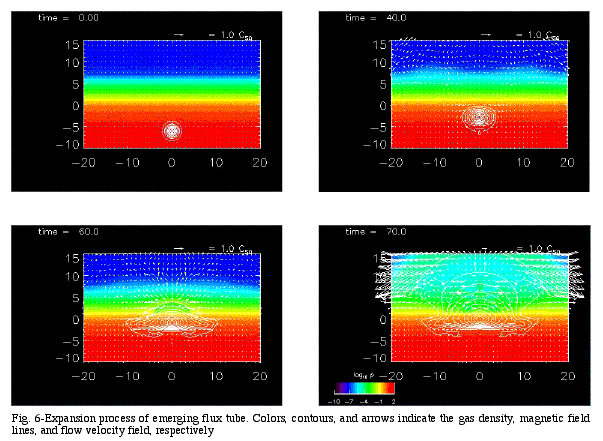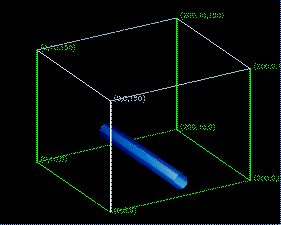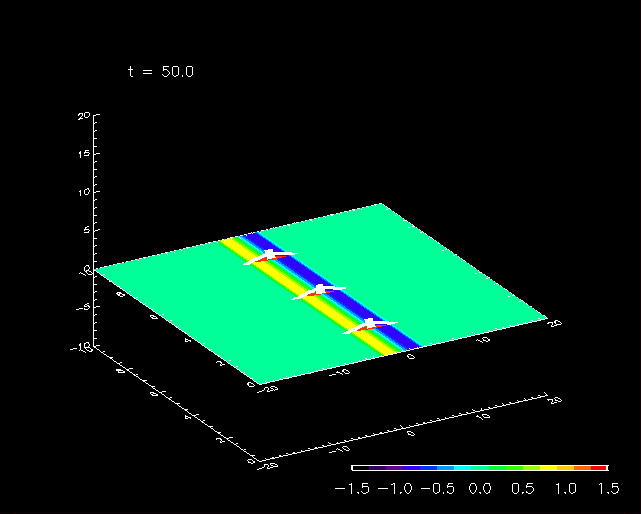
This work is intended to study dynamic evolution of a magnetic flux tube that rises from an upper solar convection zone to the solar corona, by performing a series of two-and-a-half dimensional MHD simulations with focus on a circular cross section of the flux tube. In these simulaitons a cylindrical flux tube placed horizontally in the convection zone (convectively unstable region) started to rise, and when the top of the flux tube reached a convectively stable solar surface (photosphere), the cross section changed the shape from an almost round one to a horizontally extended one (flattening of the flux tube), forming a magnetic layer just below the photosphere. As a plasma inside the layer was then squeezed out to the right and left sides of the layer, the magnetic layer was locally subject to the magnetic Rayleigh-Taylor instability. The undulation wavelength of the layer increased as the flattening of the flux tube proceeded, and when it became longer than the critical wavelength for the instability (emergence wavelength), the flux tube emerged above the photosphere. Subsequently, emergent part of the flux tube started to expand into the corona when that part had sufficiently strong magnetic pressure compared to the gas pressure of a plasma lying on the emergent part. We confirmed that the expansion process was characterized by self-similar evolution derived by Shibata et al. (1990); that is, both the plasma and magnetic field had self-similar distributions in the emergent part.
Magara, T. 2001 ApJ, 549, 608
Shibata, K., Tajima, T., & Matsumoto, R. 1990, Phys. Fluids, B, 2


Evolution of emerging flux tube

Expansion of emerging magnetic field lines
Color map: normal component of magnetic field on the surface